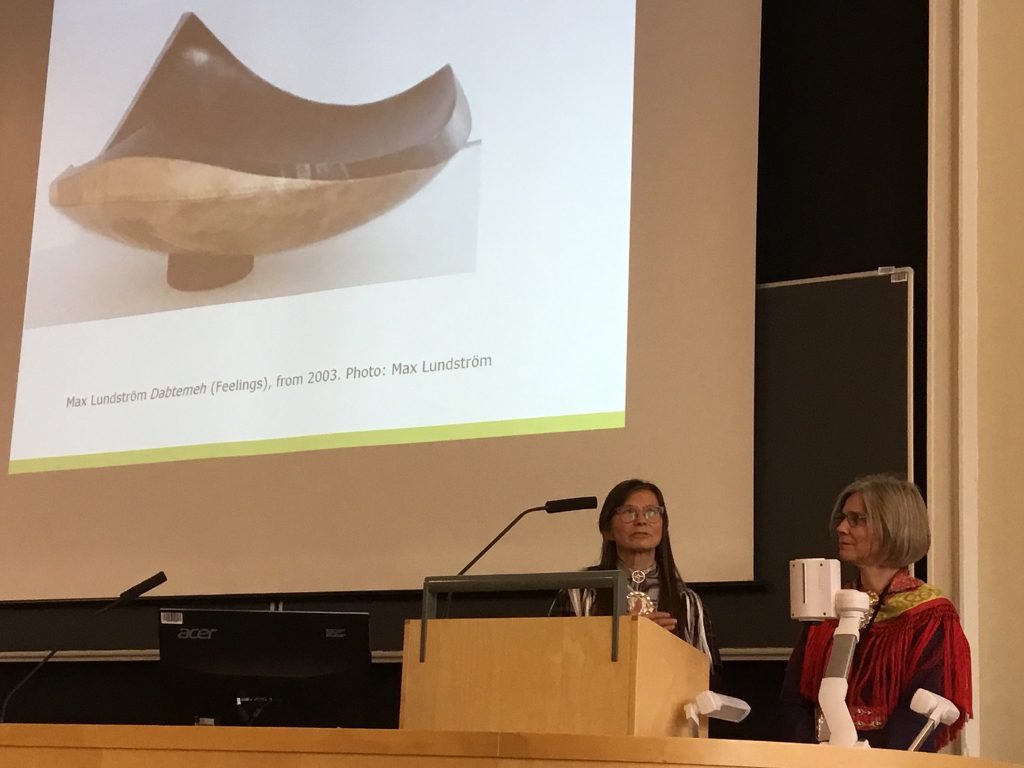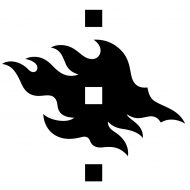In 2019 the International Year of Indigenous Languages (IYIL2019) declared by the United Nations raised awareness on the immense value of Indigenous languages diversity. It also drew attention to the alarming rate to which many languages are turning into sleeping languages and endangered.
In order to celebrate IYIL2019, an International conference Árran – Ecology of Indigenous Languages was held at the University of Helsinki on 19 and 20 September. This was organized by Indigenous Studies in collaboration with the University of Helsinki Humanities Programme, HELSUS, Helsinki Collegium of Advanced Studies, Doctoral Programme for Language Studies at the Faculty of Arts, Embassy of Brazil, U.S. Embassy, and Kone Foundation.
Árran is a North Sámi word, which means the fire in the middle of the lávvu, tent. It is elemental to sit around the árran and gáfestallat (drink coffee and chat together) while sharing stories and knowledge. With our conference, we hoped to re-create this kind of atmosphere by allowing scholars, artists, authors as well as authorities coming from Finland, Sápmi (Norway, Sweden), Aotearoa (New Zealand), USA, Brazil, Tonga, Russia, and Tuva to share their stories and knowledge.
The event’s overarching theoretical lens was the concept of “language ecology,” a relational, located and situated conceptualization of language. The situations of Indigenous peoples are diverse, and they can be better understood when appreciating in more depth power relations, social hierarchies, and historical developments. In the two-day conference, we presented Indigenous languages as showcases of relational epistemologies. Several speakers addressed specific terminologies emerging from the perceptions and interactions with the environment, which produce cultural landscapes. We also discussed how sustainability issues are linked to linguistic diversity with the hope to enhance environmental and cultural diversity, and thus overall the well-being of Indigenous communities.
The keynote speaker, Prof. Gunvor Guttorm from Sámi University of Applied Sciences, showed how Indigenous knowledge-making is embedded in Indigenous languages. While presenting duodji, Sámi craftwork, as an everyday activity and as a carrier of cultural and historical knowledge, she also indicated that the re-appropriation of ládjogahpir, a hat with a horn for women, can also be seen as an act of decolonization.

Several papers pointed out how languages have both material and immaterial, as well as visible and invisible dimensions. These constantly intertwined aspects could be seen in artwork, poetry, music, and multisensorial experiences of the environment. Even if assimilation and Euro-American centric schooling systems have weakened language diversity and oral traditions to a certain extent, “traditional” ways of communicating can still be seen in non-literal and non-linear ways, art and craft work and in the emotions they prompt. Some good examples on how Indigenous people have created ways to promote and revitalize their language were presented. Among them, Prof. Harald Gaski discussed how Sámi literature and poetry are rich in- and outside the Sámi language field and society, and Sámi poet Inga Ravna Eira emphasized how the language itself has gotten both stronger and richer through poetry and literature.
Both the situation of the Indigenous languages and the multiplicity of the knowledge embedded in them make us think about reflexivity, as the second keynote speaker, Prof. Anthony K. Webster, indicated. He highlighted the importance to think of one’s own position and place in relations to the creation of the world. Language fundamentally expresses what it means to be a human or how to become more human in different cultures and ontological approaches.
The critical situations of numerous Indigenous languages require serious and continuous efforts of several actors at different levels. It was suggested during the conference in Helsinki that a decade of Indigenous languages would be needed and highly recommended for the present efforts to flourish and provide positive results. Fortunately, in December 2019, the UN declared an International Decade of Indigenous Languages to begin in 2022.
Hanna Guttorm, Pirjo Kristiina Virtanen and Laura Siragusa
Dr. Hanna Guttorm is a HELSUS postdoctoral fellow in Indigenous Studies. Ass. prof. Pirjo Kristiina Virtanen is the head of Indigenous Studies and member of the HELSUS Board. Dr. Laura Siragusa is HUH and Kone Foundation postdoctoral fellow in Indigenous Studies, as well as HELSUS member.
Photo by Almos Bechtold on Unsplash.

